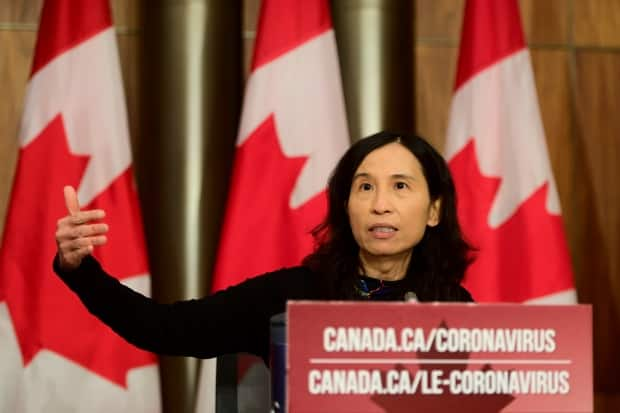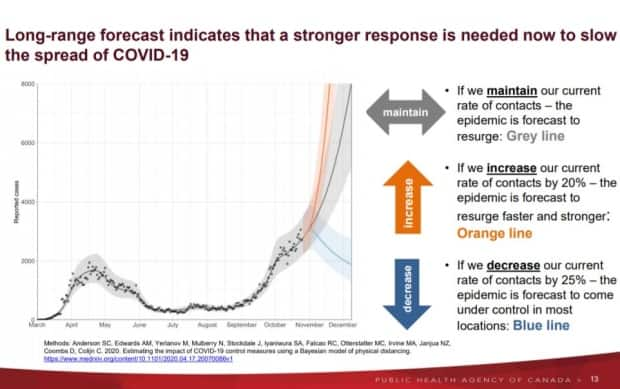Canadians must reduce contacts by 25 per cent to flatten 2nd wave curve, officials say

Canadians must reduce the number of close contacts they have with other people by 25 per cent in order to suppress the second wave of COVID-19, according to new federal modelling on the spread of the coronavirus released today.
At a news conference in Ottawa, Chief Public Health Officer Dr. Theresa Tam said the number of people being infected continues to increase at rates higher than they were during the first wave, even as some regions tighten restrictions.
"If we increase, or if we even maintain our current rate of contact with others, the epidemic in Canada is forecasted to continue increasing steeply," said Tam.
"To bend the epidemic curve and reduce transmission to lower levels … we must really reduce our number of contacts as much as possible."
Reducing those interactions by 25 per cent would bring the pandemic under control in most regions, according to the modelling.

Private social gatherings such as weddings, funerals and informal celebrations continue to be responsible for outbreaks of COVID-19, Tam said. Many of them have become 'superspreader events' — single events that result in large numbers of new cases.
Tam urged people to avoid all contacts and gatherings with people except for "personal, family and essential responsibilities," and to continue with virtual gatherings or physically-distanced outdoor activities.
"The 25 per cent in the modelling scenario includes not just personal measures, but also what your community might be doing to reduce contacts," said Tam.
WATCH: Dr. Tam urges Canadians to limit contact with people outside of household bubbles
Over 300 more people could die by Nov. 8
The projections show the number of COVID-19 cases could rise from the current level — 230,547 as of 11:20 a.m. ET today — to 262,000 by Nov. 8, with up to 326 people expected to die from complications of the disease during that time.
The majority of new cases continue to be reported among adults between the ages of 20 to 39 — although Tam warned that cases are on the rise among people in the 80-and-older age group as well — the age group facing the highest risk of severe illness and death.
While it has been increasing, the number of people hospitalized due to COVID-19 remains below the peak of about 3,000 per day observed during the first phase of the pandemic. Tam said this is most likely because the vast majority of recent cases have been among young people who have experienced less severe illnesses, and because of the better availability of treatments.
"However, this situation can change and depends on the vulnerability of populations impacted and the capacity of the health care system in affected areas," Tam said.
An average of 1,100 people were being treated per day in Canadian hospitals for complications from COVID-19 over the last week, Tam said, including 200 people in intensive care units.
Dr. Tam on how Canadians should plan their Christmas and holiday celebrations
The number of deaths also has continued to gradually increase over the past several weeks — but at a slower rate than it did during the first wave. An average of 30 people have died per day of COVID-19-related illness over the past week, Tam said. The average age of people who have died is 84, but it ranges from 19 to 107 years old.
Quebec and Ontario continue to lead the country in the number of new cases, accounting for 75 per cent of all cases reported since the beginning of the pandemic — although B.C. and the Prairie provinces have all reported record new daily case counts over the past week.
Canada's test positivity rate — which refers to the percentage of coronavirus tests that come back positive — currently hovers at around 4 per cent nationally, after being reduced to around 1 per cent for most of the summer. That increase comes even as the country tests at a relatively high rate, Tam said.
Prime Minister Justin Trudeau urged people to continue following public health guidelines — particularly those that call for people to physically distance and reduce close contacts with others.
"When you're thinking of seeing people outside your household, ask yourself, 'Is this absolutely necessary?'" said Trudeau.
"I know that the situation is frustrating. I know it's hard. But it is temporary."


